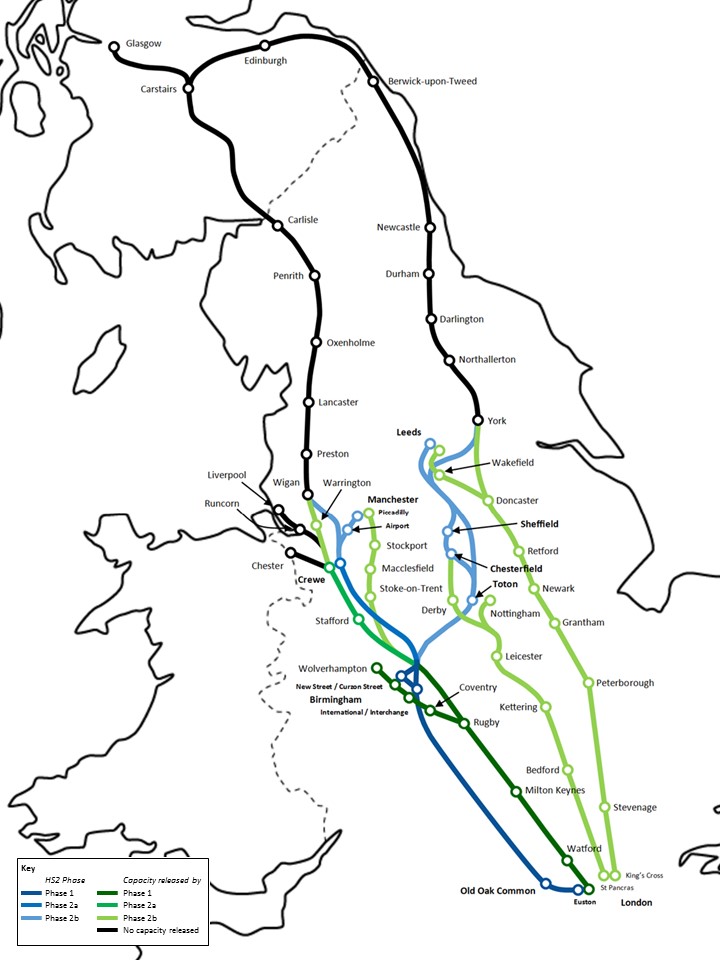HS2 will deliver a step change in capacity and connectivity on the UK’s long-distance rail network with the potential to reshape the way people travel across the UK, within local regions and communities. Fast, frequent and reliable services will directly connect eight of 10 of Britain’s largest cities, providing much needed extra capacity to free up space on our increasingly crowded railways.
Steer was commissioned by the Department for Transport to illustrate how released capacity on existing lines could be utilised post Phase 2b (i.e. completion of the current HS2 scope). We developed and made a preliminary assessment of six scenarios, each with different primary objectives:
- Regular Interval Connections: Enhancing London services for the principal intermediate stations on the WCML and ECML, providing a higher frequency service between these stations and much-improved cross-network connectivity.
- New Destinations: Introducing new London intercity services and/or improving services to stations that currently receive fewer than 4 return services a day.
- Cross-country: Enhancing non-London city to city existing services and extending services to new markets.
- London Commuter on the ECML: Enhancing commuter services on the ECML from London to existing destinations.
- Regional Transport Aspirations: Building on initiatives put forward by regional bodies to enhance local and commuter services into Manchester and Leeds
- Freight: Using released freight paths to enhance long-distance freight services that use the WCML and ECML
For each of the passenger scenarios journey times, connectivity and capacity benefits were examined.
Successes and outcomes
Steer provided the Department for Transport with a report on our conclusions. The report formed a key part of the HS2 Phase 2b Strategic Case argument on released capacity presented in the Department for Transport’s High Speed Two Phase Two Strategic Case released on 17 July 2017. A summary of our report was included as annex to HS2 Phase 2b Strategic Case.

